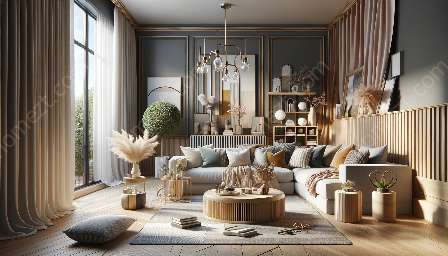Implementing analogous color schemes in interior decor involves combining colors that are adjacent on the color wheel to create a harmonious and visually appealing space. Analogous color schemes can enhance homemaking by creating a welcoming and cohesive atmosphere in living spaces.
Understanding Analogous Color Schemes
Analogous colors are those that are next to each other on the color wheel, such as red, orange, and yellow or blue, green, and yellow-green. These colors share a common hue, resulting in a balanced and harmonious combination when used together in interior decor.
Creating a Cohesive Color Palette
When implementing an analogous color scheme, it's essential to create a cohesive color palette that complements the overall design of the space. This can be achieved by selecting a dominant color for the room and then using its neighboring colors as accents and highlights to create depth and interest.
Enhancing Homemaking with Analogous Colors
Analogous color schemes can greatly contribute to the overall ambiance and mood of a living space. For example, using warm analogous colors like red, orange, and yellow can create a cozy and inviting atmosphere in a living room, making it an ideal space for relaxation and social gatherings.
Applying Color Psychology
Color psychology plays a significant role in interior decor, and implementing analogous color schemes allows homeowners to harness the psychological effects of colors to create a desired mood or ambiance. For instance, analogous colors in shades of blue and green can evoke a sense of tranquility and serenity, making them suitable for bedrooms and relaxation areas within a home.
Utilizing Color Schemes and Palettes
Understanding and implementing color schemes and palettes is crucial for successful interior decor. Analogous color schemes can be complemented with other color palettes, such as complementary or monochromatic schemes, to add contrast and visual interest to a room while maintaining a harmonious overall look.
Incorporating Analogous Colors into Interior Design
When incorporating analogous colors into interior design, it's important to consider the existing furnishings, flooring, and architectural elements within the space. Cohesive design elements can be enhanced by utilizing analogous colors, resulting in a visually pleasing and well-coordinated interior decor.
Conclusion
Implementing analogous color schemes in interior decor not only enhances the aesthetic appeal of a living space but also contributes to creating a warm and inviting environment for homemaking. By understanding the principles of color schemes and palettes, homeowners can make informed decisions to transform their homes into visually stunning and harmonious retreats.


